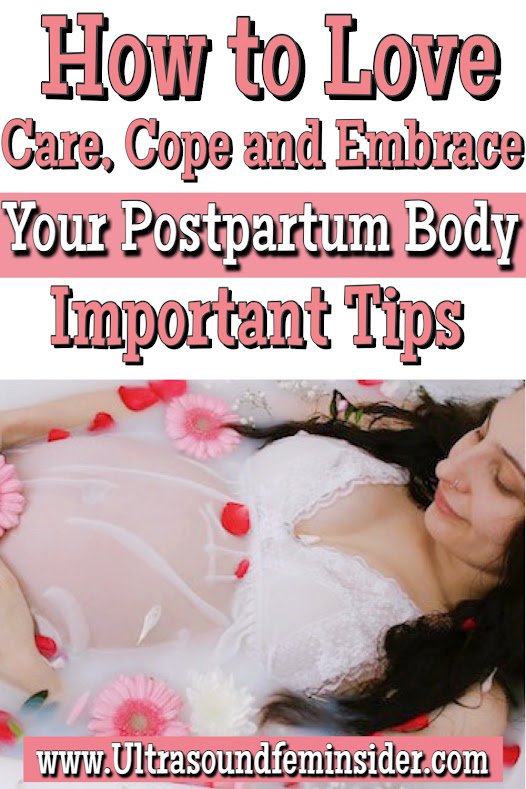The postpartum period is a time of significant physical and emotional changes for a woman. After carrying a baby for nine months, a woman’s body undergoes numerous changes during delivery and in the postpartum period. These changes can be both challenging and rewarding. Coping with and embracing a postpartum body can be challenging, but with self-care, support, and a positive mindset, women can learn to love and appreciate their bodies after giving birth.
In This Article You’ll Learn How to Love, Care and Embrace your Postpartum Body.
What Postpartum Changes are you Expected to Experience after Giving Birth?
Pregnancy can cause significant changes in a woman’s body, both during and after pregnancy. Here are some common changes that can occur:
1. Abdominal Postpartum Changes.
After giving birth, many women experience significant abdominal changes as their body returns to its pre-pregnancy state. The uterus, which has expanded to accommodate the growing fetus, will gradually shrink back to its pre-pregnancy size over the course of several weeks. This process, known as involution, can cause cramping and discomfort in the lower abdomen. Additionally, the abdominal muscles that were stretched during pregnancy may be weaker and more relaxed, which can lead to a temporary “pooch” or belly bulge. To help strengthen these muscles, doctors often recommend pelvic floor exercises and other gentle exercises, such as walking or yoga. In some cases, women may also experience diastasis recti, a condition in which the abdominal muscles separate along the midline, causing a visible bulge. This condition can be improved with targeted exercises and in severe cases may require surgical intervention. It’s important for women to give their bodies time to heal after giving birth and to talk with their healthcare provider about any concerns they may have about their abdominal changes.
2. Vaginal Postpartum Changes.
Giving birth can cause significant vaginal changes for women. During delivery, the vaginal tissues may stretch and tear, and the pelvic floor muscles may become weakened. This can lead to symptoms such as pain, soreness, and difficulty with urination or bowel movements in the days and weeks after delivery. Additionally, hormonal changes can cause vaginal dryness, itching, and discomfort. In most cases, these changes will improve over time as the body heals, but it’s important to practice good hygiene and avoid activities that may further irritate the vaginal area. Women may also benefit from pelvic floor exercises or physical therapy to help strengthen the muscles and improve vaginal health. If symptoms persist or worsen, it’s important to talk with a healthcare provider to rule out any underlying conditions or complications.
3. Breast Postpartum Changes.
Breast changes are a common occurrence after giving birth as the body prepares for lactation and breastfeeding. In the days after delivery, the breasts may become swollen, tender, and engorged as milk production begins. This can cause discomfort, and in some cases, lead to mastitis, a painful infection of the breast tissue. Over time, the body will adjust to the baby’s feeding schedule, and milk production will stabilize, reducing discomfort and engorgement. Breastfeeding can also cause changes in the nipples, which may become sore, cracked, or inverted. Using nipple creams, breast pads, and proper breastfeeding techniques can help alleviate these symptoms. In some cases, breastfeeding difficulties or complications may require the help of a lactation consultant or healthcare provider. As milk production begins, breasts can become swollen, sore, or tender. Breast size and shape may also change, and the nipples may become more sensitive.
4. Hormonal Postpartum Changes.
Giving birth involves significant hormonal changes for women. During pregnancy, the body produces high levels of estrogen and progesterone, which help to support the pregnancy and prepare the body for childbirth. After giving birth, these hormone levels drop rapidly, which can lead to a range of physical and emotional changes. The sudden drop in estrogen and progesterone can cause physical symptoms such as breast engorgement, vaginal dryness, and hot flashes. It can also contribute to emotional changes such as mood swings, irritability, and depression. Additionally, the hormone oxytocin, which is released during childbirth and breastfeeding, can help to promote bonding between mother and baby and may also have a calming effect. However, hormonal changes can vary from woman to woman and can also be influenced by factors such as the type of birth, breastfeeding, and postpartum complications. Hormonal changes during and after pregnancy can cause mood swings, fatigue, and changes in appetite.
5. Weight Postpartum changes.
Weight changes are a common occurrence after giving birth. Many women will lose some weight immediately after delivery due to the loss of the baby, amniotic fluid, and placenta. However, it’s important to remember that the body needs time to heal after delivery, and it’s not recommended to start a weight loss program right away. Additionally, hormonal changes and breastfeeding can impact weight loss, and some women may experience weight retention or even gain during this time. It’s important to talk with a healthcare provider about safe and healthy ways to manage weight after giving birth. This may include a combination of regular exercise, a balanced diet, and breastfeeding support. It’s also important to remember that every woman’s body is different, and weight loss may occur at a different rate for each individual.
6. Skin and Hair Postpartum changes.
Skin and hair changes are a common occurrence after giving birth. Hormonal fluctuations can cause a range of skin changes, including acne, dryness, and hyperpigmentation. Some women may also experience hair loss or thinning in the months following delivery due to hormonal shifts and changes in hair growth cycles. These changes are usually temporary and will improve as the body adjusts to postpartum life. In the meantime, it’s important to take good care of the skin and hair, using gentle and nourishing products and avoiding harsh chemicals or treatments. Eating a balanced diet and staying hydrated can also help support healthy skin and hair. Hormonal changes can cause changes in skin texture, color, or pigmentation. Stretch marks are also common.
7. Body and Self-image Postpartum changes.
Giving birth can cause significant changes in body and self-image for women. Many women may struggle with feelings of insecurity or dissatisfaction with their postpartum bodies, especially in comparison to media portrayals of postpartum bodies. Additionally, the demands of caring for a new baby can make it difficult to find time for self-care or exercise, which can impact physical health and self-image. It’s important for women to remember that postpartum changes are a normal and natural part of the process of bringing a new life into the world. Talking with a healthcare provider, joining a support group, or seeking counseling can help women work through these feelings and develop strategies for self-care and body positivity. Additionally, it’s important for partners and loved ones to be supportive and understanding during this time of transition.
8. Emotional Postpartum Changes.
The postpartum period can be emotionally challenging, causing anxiety, depression, or baby blues.
- Baby Blues: A common condition that affects up to 80% of new mothers, baby blues typically begins within a few days after delivery and may last for up to two weeks. Symptoms include mood swings, anxiety, sadness, and irritability.
- Postpartum Depression (PPD): A more severe form of depression that affects up to 20% of new mothers. Symptoms include intense feelings of sadness, hopelessness, worthlessness, and guilt, as well as a loss of interest in activities, fatigue, changes in appetite and sleep patterns, and thoughts of self-harm or harming the baby.
- Postpartum Anxiety: Characterized by excessive worry, fear, and/or panic attacks, postpartum anxiety can be debilitating and impact a new mother’s ability to care for herself and her baby.
- Post-Traumatic Stress Disorder (PTSD): Some women may experience symptoms of PTSD after a traumatic birth experience, such as a complicated delivery, emergency c-section, or premature birth.
- Adjustment Disorder: Many new mothers experience a period of adjustment after giving birth, which can include feelings of stress, anxiety, and difficulty coping with changes in routine and responsibilities.
You can share this article by clicking the image below.
Tips for Coping and Embracing your Postpartum Body:
- Be kind to yourself: Remember that your body has gone through a significant change, and it takes time to adjust. Be kind to yourself and avoid negative self-talk.
- Focus on self-care: Take care of yourself physically and mentally. Make time for exercise, healthy eating, and rest. Find activities that help you relax and reduce stress.
- Surround yourself with support: Surround yourself with people who love and support you. Talk to friends, family, or a therapist about your feelings and concerns.
- Set realistic expectations: Don’t compare yourself to others or unrealistic standards. Remember that everyone’s postpartum journey is different, and there is no right or wrong way to feel or look.
- Embrace your body: Focus on the positive aspects of your postpartum body. Your body has done an incredible thing by bringing new life into the world. Embrace the changes and celebrate what your body has accomplished.
- Treat yourself: Treat yourself to things that make you feel good, such as a new outfit, a massage, or a date night with your partner.
Related Posts you might want to read!
First trimester of pregnancy. The checklist.
How to Conceive a Girl Naturally.
25 Most Common Pregnancy Questions Answered.
Final thoughts about How to Love, Care and Embrace your Postpartum Body.
Remember that it’s normal to feel a range of emotions about your postpartum body. Be patient with yourself and give yourself time to adjust. With self-care, support, and a positive mindset, you can learn to embrace and love your postpartum body. Every woman’s experience with pregnancy and postpartum changes is unique, and some changes may be more pronounced than others. It’s essential to listen to your body and seek medical attention if you experience severe or concerning symptoms.
I hope this article is helpful, share your thoughts bellow.
Zadi, xo
Disclaimer: The medical information on this post is for educational and entertainment use only. Under no circumstances, this information is to replace your doctor’s advice or to treat any disease. For proper care, always visit your doctor.










